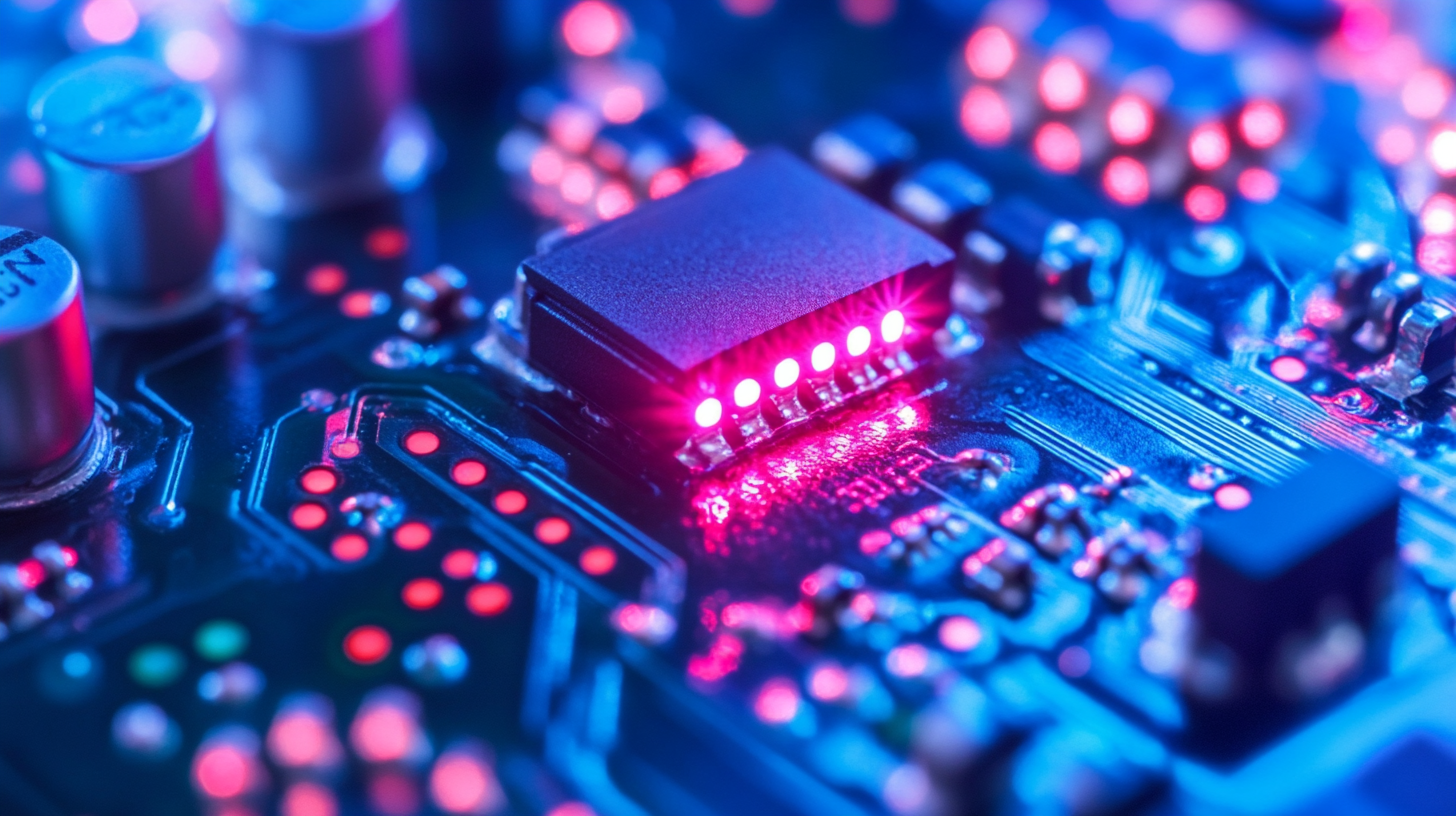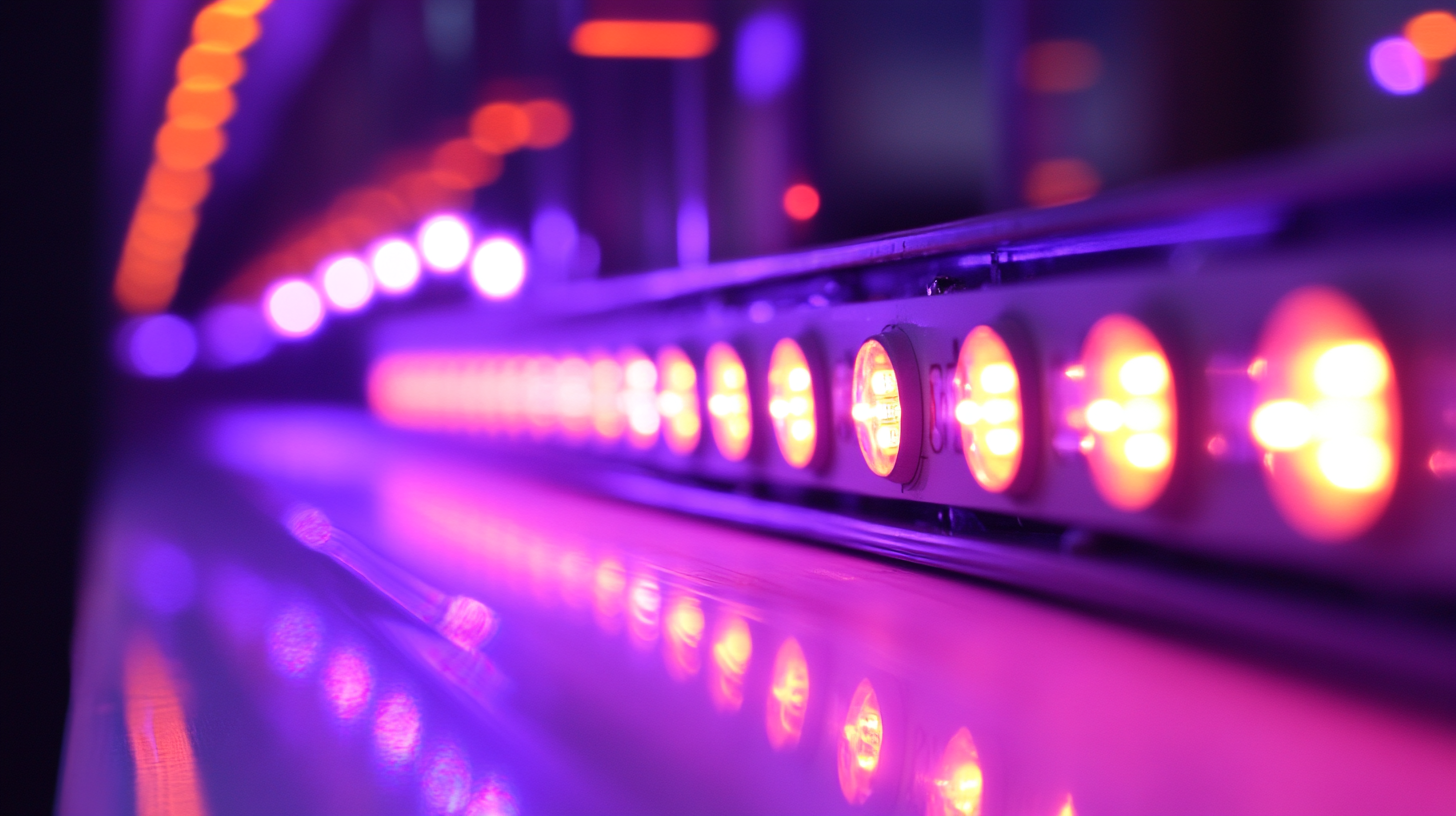Navigating the Future of Best Dimmable Led Driver Market Trends and Innovations by 2025
 As the demand for energy-efficient lighting solutions continues to rise, the
Dimmable LED Driver market is poised for significant growth and innovation by 2025.
This pivotal component not only enhances the versatility of LED lighting systems but also plays a critical role in creating
comfortable and aesthetically pleasing environments.
In this blog, we will explore various industry applications that showcase the versatility of Dimmable LED Drivers, from
residential spaces to commercial settings,
and delve into the challenges associated with different types of drivers.
By examining current trends and technological advancements, we aim to provide insights into how these drivers
are shaping the future of lighting solutions and addressing key problems faced by users and manufacturers alike.
Join us as we navigate the exciting landscape of Dimmable LED Drivers and their impact on the industry.
As the demand for energy-efficient lighting solutions continues to rise, the
Dimmable LED Driver market is poised for significant growth and innovation by 2025.
This pivotal component not only enhances the versatility of LED lighting systems but also plays a critical role in creating
comfortable and aesthetically pleasing environments.
In this blog, we will explore various industry applications that showcase the versatility of Dimmable LED Drivers, from
residential spaces to commercial settings,
and delve into the challenges associated with different types of drivers.
By examining current trends and technological advancements, we aim to provide insights into how these drivers
are shaping the future of lighting solutions and addressing key problems faced by users and manufacturers alike.
Join us as we navigate the exciting landscape of Dimmable LED Drivers and their impact on the industry.
Emerging Trends in Dimmable LED Driver Technologies by 2025
As we look towards 2025, the dimmable LED driver market is poised for transformative changes driven by innovative technologies and shifting consumer demands. According to recent insights, the global LED market is projected to escalate to an impressive USD 13.003 billion, reflecting a growing preference for energy-efficient solutions. Dimmable LED drivers play a crucial role in this landscape, allowing users to achieve optimal lighting conditions while enhancing energy savings. The integration of smart technology into these drivers is expected to enhance user experience, providing features such as remote control, scheduling, and adaptive lighting that responds to environmental changes.
Emerging trends indicate a strong push towards customization and retrofitting solutions within the dimmable LED driver sector. As commercial and residential sectors increasingly adopt smart lighting features, manufacturers are innovating to meet the varied needs of consumers. These advancements not only promise to improve energy efficiency but also open new avenues for personalization in lighting design. Furthermore, as sustainability remains a priority, the shift towards advanced, eco-friendly dimmable LED drivers is anticipated to foster growth, making 2025 a pivotal year for this evolving market.

Impact of Regulatory Standards on Dimmable LED Driver Market
As the dimmable LED driver market continues to evolve, regulatory standards play a pivotal role in shaping industry practices and pushing innovation. With a heightened focus on energy efficiency and sustainability, governments worldwide are implementing stringent guidelines that manufacturers must adhere to. These regulations not only aim to reduce energy consumption but also to lower carbon footprints by ensuring that LED drivers perform optimally while minimizing waste. Compliance with these standards encourages manufacturers to enhance their designs, leading to improved performance and reduced costs over time.
In addition to energy efficiency, regulatory standards also impact safety and quality assurance in the dimmable LED driver market. Compliance with international safety standards helps ensure that products are safe for consumers and compatible with various lighting systems.
With innovations in driver technology, such as smart controls and integration with IoT systems, manufacturers need to align their product offerings with evolving regulatory requirements. This alignment fosters consumer confidence and expands market opportunities as end-users increasingly prioritize safety, reliability, and advanced functionalities in their lighting solutions.
Thus, as we move towards 2025, the interplay between regulations and technological advancements will be crucial in steering the future of the dimmable LED driver market.
Innovations Driving Energy Efficiency in LED Drivers
 The evolution of LED driver technology is pivotal in enhancing energy efficiency and sustainability in lighting solutions. Innovations in dimmable LED drivers are at the forefront of this transformation, integrating advanced features that not only optimize energy consumption but also provide greater control over lighting parameters. Smart drivers now incorporate adaptive algorithms that adjust power supply based on ambient light levels and user preferences, significantly reducing energy wastage.
The evolution of LED driver technology is pivotal in enhancing energy efficiency and sustainability in lighting solutions. Innovations in dimmable LED drivers are at the forefront of this transformation, integrating advanced features that not only optimize energy consumption but also provide greater control over lighting parameters. Smart drivers now incorporate adaptive algorithms that adjust power supply based on ambient light levels and user preferences, significantly reducing energy wastage.
Moreover, the integration of wireless connectivity in LED drivers allows for seamless communication with smart home systems. This capability enables users to customize lighting scenarios, enhancing usability and comfort while further promoting energy savings. Techniques like pulse-width modulation and the implementation of high-efficiency semiconductor materials also contribute to decreased energy loss, making modern dimmable LED drivers more efficient than ever. These trends reflect a broader commitment to sustainability and innovation, setting the stage for a greener, more efficient lighting landscape by 2025.
Analyzing Global Trade Policies Affecting LED Driver Exports and Imports
The global market for LED drivers is continuously evolving, influenced by various factors including trade policies that significantly affect exports and imports. According to a recent report by MarketsandMarkets, the global LED driver market size was estimated at USD 6.7 billion in 2020 and is projected to reach USD 11.9 billion by 2025, growing at a CAGR of 11.8%. Trade policies play a crucial role in this growth, as they can either facilitate or hinder the cross-border flow of these essential components. For instance, tariffs imposed by major economies on electronic goods can lead to increased costs for manufacturers and consumers alike, potentially stifling market growth.
Furthermore, the shift towards sustainability and energy efficiency has prompted governments to reevaluate their trade regulations, creating an environment that favors eco-friendly innovations, including dimmable LED drivers. According to a report from the International Energy Agency (IEA), energy-efficient lighting solutions could result in up to 30% savings on electricity bills, pushing countries to adopt favorable policies that support the import of advanced LED technologies. As countries navigate these complex trade landscapes, the movement towards more relaxed regulations could enhance global collaboration, ultimately benefiting the dimmable LED driver market by broadening access to innovative products and technologies worldwide.
Navigating the Future of Best Dimmable Led Driver Market Trends and Innovations by 2025
| Year | Global Market Value (USD Billion) | Dimmable LED Driver Units Sold (Million) | Top Regions for Exports | Key Innovations in Technology |
|---|---|---|---|---|
| 2021 | 3.5 | 150 | North America, Europe | Smart Control Systems, Energy Efficiency |
| 2022 | 4.0 | 180 | Asia-Pacific, Europe | Wireless Technology, Advanced Heat Management |
| 2023 | 4.5 | 210 | Europe, North America | IoT Integration, Enhanced Dimming Levels |
| 2024 | 5.0 | 250 | Asia-Pacific, North America | Adaptive Lighting Solutions, Modular Designs |
| 2025 | 5.5 | 300 | Global | Customizable Control Options, Higher Efficiency Standards |
Future Market Opportunities for Dimmable LED Driver Manufacturers
As the demand for energy-efficient lighting solutions grows, the dimmable LED driver market is poised for significant opportunities. According to a recent report by MarketsandMarkets, the global dimmable LED driver market is expected to reach $7.56 billion by 2025, reflecting a compound annual growth rate (CAGR) of 22.3% from 2020 to 2025. This surge is driven by the increasing inclination towards smart lighting systems and energy-saving technologies across residential, commercial, and industrial sectors.
Manufacturers of dimmable LED drivers can capitalize on these opportunities by focusing on innovations that enhance compatibility with smart home systems. Research from Grand View Research indicates that advancements in wireless technologies, such as Zigbee and Bluetooth, are fueling the integration of LED drivers with IoT devices, making it easier for consumers to manage their lighting preferences. Additionally, the rising trend of sustainability and energy conservation is prompting developers to create drivers that not only maximize energy efficiency but also extend the lifespan of LED products. By aligning their offerings with these emerging trends, manufacturers can ensure their growth in the competitive dimmable LED driver market.

